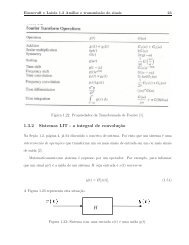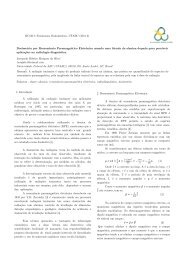You also want an ePaper? Increase the reach of your titles
YUMPU automatically turns print PDFs into web optimized ePapers that Google loves.
Algoritmo TDIDT<br />
[C4.5, Quinlan, 1993]<br />
Generate_tree(R, C, T)<br />
// R: set of non-categorical attribute<br />
// C: categorical attribute, T: training data<br />
1. if T has the same categorical value then return a single no<strong>de</strong> with<br />
the value<br />
2. if R={} then return a single no<strong>de</strong> with most frequent categorical<br />
value in T<br />
3. A = attribute with highest information gain, Gain(T,A) among R<br />
4. Let A 1 , A 2 , .., A m the attribute values of A<br />
5. Let T 1 , T 2 , .., T m the subsets of T partitioned by of A i<br />
6. return a no<strong>de</strong> with A and m links as follows<br />
7. for i = 1 to m do<br />
1. Generate_tree(R-{A}, C, T i )<br />
20
















